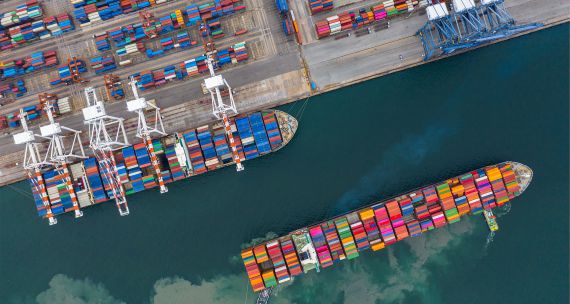Beijing’s Belt and Road Summit and Gala last week was not just an elaborate dinner party and display of theatrics – it was China’s version of an invitation to the global community to engage with its most ambitious trade and infrastructure project yet – the US$1-trillion Belt and Road Initiative.
First announced by President Xi Jinping in 2013, the Belt and Road Initiative is an infrastructure mega-project linking China through Europe and the Middle East to Africa by road, rail, air and sea. Based on a draft communiqué released alongside the two-day event, the summit sought to emphasize the grander visions for the Initiative, which include multilateral collaboration on a long-term and sustainable financial system, co-operation on infrastructure projects along the route, promoting inclusive and equal trade opportunities, as well as committing to greener practices and curbing climate change.
The Belt and Road Initiative would ultimately cover over 65 countries, 60 per cent of world population, and 40 per cent of global GDP. China views the Initiative as the cornerstone of a global geo-political paradigm shift in which it features as a new hegemon. Its commitment to the super-project is profound, and even includes a series of slick, new, multi-language YouTube propaganda reels featuring singing children and an animated history lesson for the world’s high-school students affirming the benefits of the project.
China has also made it clear that the Initiative creates no boundaries, and that any country can join in its own way. During the summit, in fact, fellow APEC member Chile became one of the newest members of the China-led Asian Infrastructure Investment Bank (AIIB), a move that aligns with ambitious plans for a potential China-Chile collaboration on a Trans-Pacific fiber optic cable to improve digital connectivity between the two countries.
Notwithstanding Ambassador John McCallum and Parliamentary Secretary Pamela Goldsmith-Jones’ participation in the summit, to date Canada’s engagement with the Belt and Road Initiative has been weak. With a few exceptions, our business community is behind the curve in terms of taking advantage of Belt and Road opportunities – opportunities that extend well beyond physical infrastructure to the development of key social infrastructure projects, including education and the provision of medical, legal, financial, and other social and professional services. Certain Western European countries are even toying with the idea of a “Digital Silk Road,” which places an emphasis on developing ICT and digital connectivity platforms to deliver services like e-commerce and e-medicine to harder to reach regions that are still currently underdeveloped. Other pathways for engagement with the Belt and Road Initiative include the contribution of physical resources, technological consulting, and consultation on green ethics and workforce training. Needless to say, the Initiative presents a multitude of potential business opportunities that might not only benefit our own companies and economy, but could present an opportunity to disperse the world’s current excess capacities more equitably.
There are tools and methods available to help Canadian business get involved with the Belt and Road Initiative. For starters, they can leverage Canada’s recent membership in the AIIB to indicate their interest and capacity to join the Initiative. Ottawa’s exploratory talks on a free trade agreement with China further aligns Canada with the summit’s emphasis on greater trade liberalization.
Canadian businesses can also follow the lead of a handful of pioneer companies that have already decided to take steps to invest in countries along the Belt and Road route. That’s the approach Quebec-based Bombardier has taken – the company recently announced its plan to make a C$100-million technology transfer investment into Turkey to help realize the country’s high-speed rail vision for 2030. Similarly, Calgary’s Grand Power Logistics has tapped into the Belt and Road Initiative by expanding its operations in China to include a cross-continental rail service. Running from China’s Suzhou through Russia and Europe, and terminating in Hamburg, Germany, this major railway significantly shortens the shipping time between Europe and China.
Canadian companies with operations already established in China also have an opportunity to collaborate with Chinese counterparts to provide goods and services in other countries along the route. For example, Mississauga’s engineering firm Hatch signed a joint venture agreement with a subsidiary of the China Communications and Construction Company (which ranked No. 110 in the 2016 Fortune 500) in 2016, and is now well-positioned to bid for emerging projects.
Finally, being a champion of multilateralism, the Canadian government and relevant business associations could make use of Canada’s membership and influence in international organizations beyond the AIIB, like the World Bank, Asian Development Bank, and IMF, to secure contracts in the governmental procurement of goods and services along the Belt and Road route. A say at the table in these multilateral organizations also gives Canada a greater bargaining chip when it comes to negotiating the terms and conditions of such contracts.
While Canada may want to wait a little longer to see how the Initiative unfolds, we should be monitoring developments carefully, and educating ourselves on the players and possibilities. We must make ready to jump aboard this remarkable new ship lest it sails into the future without us.
This piece was first published in The Hill Times on May 24, 2017 (paywall).



